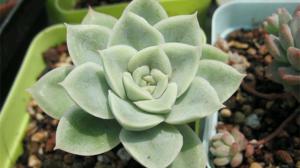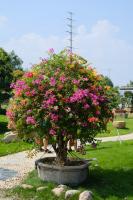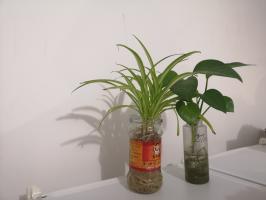Can Fruit Trees be Planted on a Slope?
Fruit trees are a wonderful addition to any landscape or garden. They not only look stunning but also provide a good source of fresh fruits. However, planting fruit trees on a slope can be a bit challenging. In this article, we will explore the advantages and disadvantages of planting fruit trees on a slope and some factors to consider before doing so.
Advantages of Planting Fruit Trees on a Slope
Planting fruit trees on a slope has several advantages. Firstly, they can be used as a natural barrier that guards against soil erosion. Fruit trees have large and robust root systems that help to hold soil in place, preventing it from washing away during heavy rain or wind. This can be particularly important on steep slopes where soil erosion is more prevalent.
Secondly, planting fruit trees on a slope can maximize the use of available space. When cultivated on a slope, fruit trees occupy less horizontal space but more vertical space, reducing the space required to grow the same number of trees on a flat surface. This makes them ideal for people with small gardens or limited space.
Disadvantages of Planting Fruit Trees on a Slope
While planting fruit trees on a slope can have several benefits, there are also several disadvantages to consider. Firstly, it can be challenging to plant and care for fruit trees on a slope due to the uneven terrain. Watering can be difficult, especially during dry periods, as water tends to run off the slope rather than being absorbed by the soil. This can cause the trees to become dehydrated and affect fruit production.
Secondly, harvesting fruits from trees cultivated on a slope can be challenging, especially for those growing larger varieties of fruit. It can be precarious to climb up and down the slope while carrying a ladder and picking fruits at the same time. This can be a significant safety concern for both the gardener and anyone around the garden.
Factors to Consider Before Planting Fruit Trees on a Slope
Before deciding to plant fruit trees on a slope, the following factors should be considered:
Soil Type: The type of soil will determine whether fruit trees can thrive on a slope. Soils that are too heavy or too light can make it challenging for trees to establish strong root systems, leading to slow growth and low fruit yields.
Site Aspect: The direction a slope faces can have a significant impact on the amount of sunlight and heat the area receives. Ideally, the site should face south, southeast or southwest to receive the maximum amount of sunlight.
Drainage: Good drainage is essential for growing fruit trees on a slope. Poor drainage increases the risk of waterlogging, which can adversely affect tree growth and yield.
Slope Angle: The angle of the slope can have a significant impact on the difficulty of planting, maintaining and harvesting fruit trees. Steeper slopes may require more extensive terracing and additional support structures to ensure the trees remain stable.
Conclusion
Planting fruit trees on a slope can be an excellent way to maximize space and reduce soil erosion. However, careful consideration should be given to the site's aspect, soil type, drainage and slope angle before initiating the project. This will help to ensure that the trees grow and yield well without compromising on safety and accessibility.

 how many times do yo...
how many times do yo... how many planted tre...
how many planted tre... how many pine trees ...
how many pine trees ... how many pecan trees...
how many pecan trees... how many plants comp...
how many plants comp... how many plants can ...
how many plants can ... how many plants and ...
how many plants and ... how many pepper plan...
how many pepper plan...






























